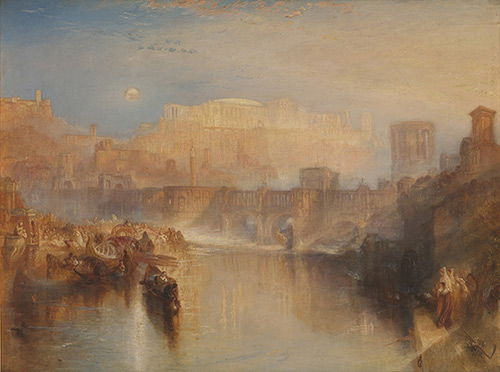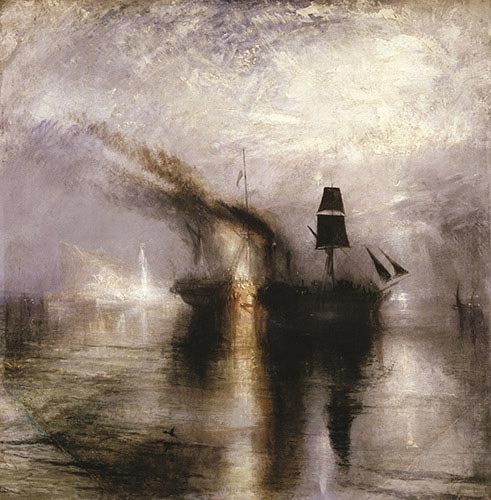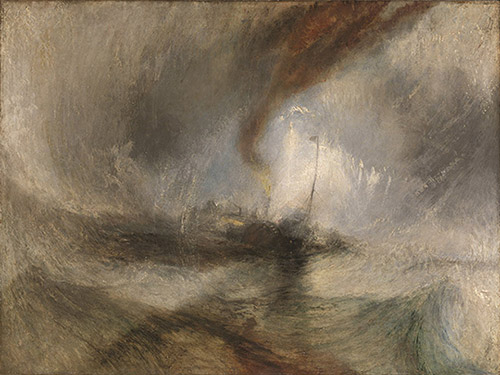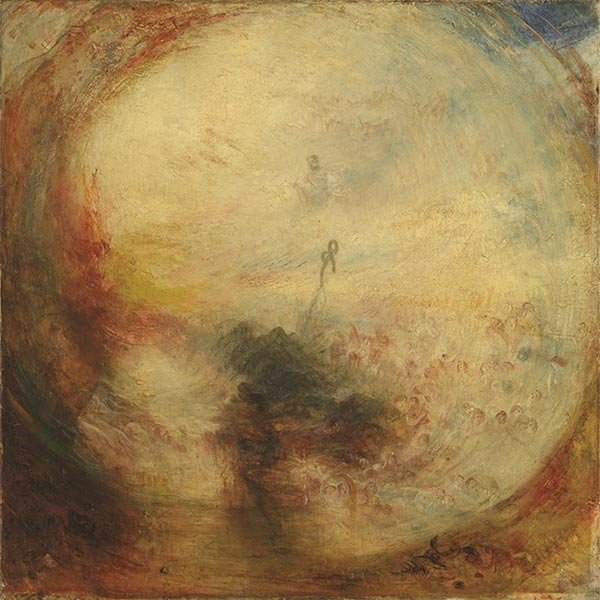Famously known for continuing to work on his canvases even as they hung on gallery walls, British giant Joseph Mallord William Turner (1775-1851) produced some of the most radical and expressive paintings of the Romantic period. More than 50 of the artist’s works in paint and paper are being featured in a hypnotic exhibition in Ontario.
Although the entire career of British Romantic painter Joseph Mallord William Turner is worthy of respectful consideration, the painter is famously known for the final 15 years of his life, in which he radically experimented with painting’s ability to capture energy, vigor, expression, and the sublime. On loan from the Tate Britain, more than 50 paintings and works on paper from this phase in Turner’s oeuvre will be on view in “J.M.W. Turner: Painting Set Free” at the Art Gallery of Ontario.

Joseph Mallord William Turner, “Ancient Rome; Agrippina Landing with the Ashes of Germanicus,” 1839, oil,
(c) Tate, London 2015
The exhibition “reveals a painter whose breadth of knowledge and romantic imagination were matched only by his innovative spirit,” the gallery asserts. “Turner’s late works, with their emphasis on atmosphere, are famous for their rich color, textures, and evocative use of light. Challenging the myths, assumptions, and interpretations that have grown around Turner’s later work, this exhibition sets out to show how his final years were a time of exceptional drive and vigor, during which he continued traveling, confronting, and painting the dramatic landscapes of Europe.”

Joseph Mallord William Turner, “Peace — Burial at Sea,” 1842, oil (c) Tate, London 2015
Organized thematically, the exhibition follows Turner’s travels across Europe, focusing on the artist’s interest in religion, mythology, classical history, and the sea. “Light and Colour (Goethe’s Theory) — The Morning after the Deluge — Moses Writing the Book of Genesis,” of 1843 is a mouthful and an eyeful. In a brilliant swirling of circular oranges, reds, browns, and blues, the work is bursting with creative enthusiasm and energy. Characteristic of this late phase in Turner’s career, the image is nearly completely abstracted, with few forms surfacing as recognizable. The gallery writes, “In this depiction of the aftermath of the Biblical flood, Turner tests Goethe’s theory that color arises from the interaction of light and shade. The ‘Moses’ referred to in the title is probably not only the biblical figure but also Moses Harris, the author of a treatise on color. Turner’s spinning vortex-like compositions convey the eternal rotation of night and day, light and dark, and also the cyclical nature of life.”

Joseph Mallord William Turner, “Snow Storm — Steam-Boat off a Harbour’s Mouth,” 1842, oil,
(c) Tate, London 2015
“J.M.W. Turner: Painting Set Free” opened on October 31 and will be on view through January 31.
To learn more, visit the Art Gallery of Ontario.
This article was featured in Fine Art Today, a weekly e-newsletter from Fine Art Connoisseur magazine. To start receiving Fine Art Today for free, click here.








